Have you been wanting to try the ‘no poo’ method but aren’t sure where to begin? You’ve come to the right place! In this post, I’m sharing five ways to wash your hair without shampoo and four mistakes to avoid so you can get the best hair of your life without harsh chemicals!
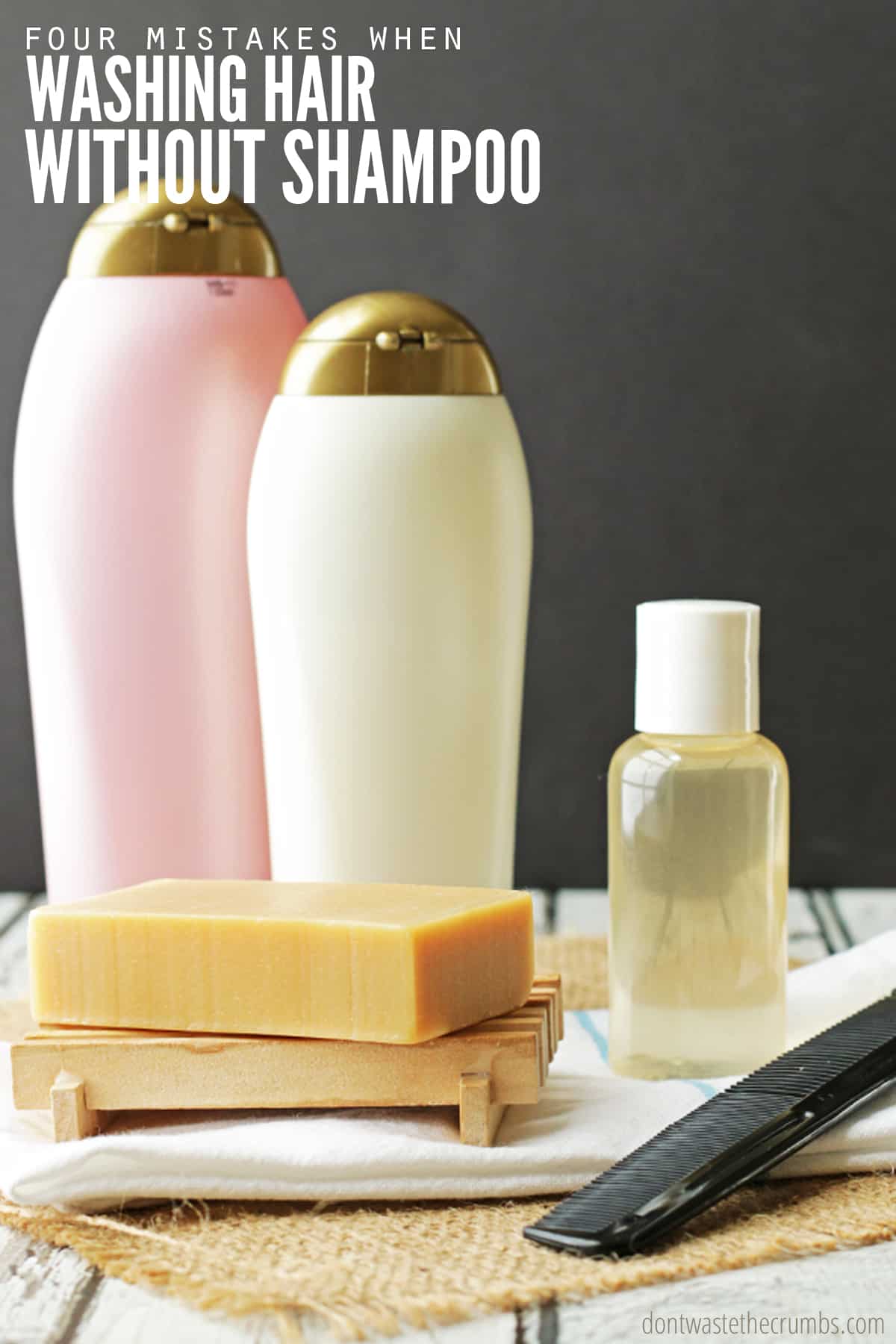
‘No poo’ stands for ‘no shampoo,’ and it’s a movement that encourages us to rethink our hair care routines and explore gentler, more natural ways to keep our hair clean without the use of toxic chemicals found in traditional shampoos.
The ‘no poo’ method typically uses baking soda, water, apple cider vinegar, co-wash, and goat milk soap to effectively cleanse hair.
Personally, I tried using baking soda and water to wash my hair and didn’t love it. Next, I landed on the goat milk soap method, which was the best for my hair when it was short! Now my hair is longer and I use a small amount of natural sulfate-free shampoo. (More on that below!)
The Purpose of Going ‘No Poo’
Traditional shampoos strip our hair of its natural oils, leaving it dry, frizzy, and sometimes even causing scalp irritation. Using shampoo alternatives allows our hair to maintain its natural oils, resulting in healthier, more balanced locks. Our hair can become shinier, softer, and more manageable without constant stripping. Plus, reducing our reliance on chemical-laden shampoos can minimize our exposure to potentially harmful ingredients.
Now, keep in mind that the ‘no poo’ method is not a one-size-fits-all solution. It works differently for everyone, and some people may find it more suitable for their hair and lifestyle than others. Experimentation is key here. I encourage you to try it and see how your hair responds. You might just discover a new haircare routine that leaves your locks looking fabulous and healthy!
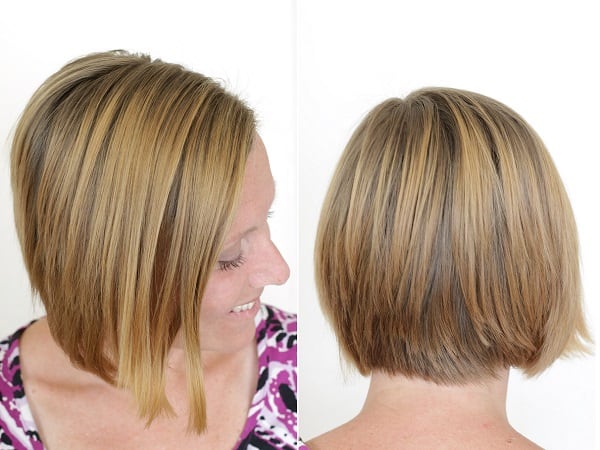
How to Wash Hair Without Shampoo: 5 Alternatives to Shampoo for Healthy Hair
#1 Baking Soda
The baking soda hair cleansing method involves using baking soda as a cleanser for your hair.
Best Hair Types for the Baking Soda Method
The baking soda method can work wonders for various hair types, but it’s particularly beneficial for those with oily hair or an oily scalp. It helps those seeking to remove product buildup.
How to Use the Baking Soda Method
Step 1: Start by creating a simple baking soda rinse. Mix about 1 tablespoon of baking soda with 1 cup of lukewarm water. Feel free to adjust the ratio depending on your hair length and personal preference.
Step 2: Hop into the shower and thoroughly wet your hair.
Step 3: Slowly pour the baking soda mixture over your scalp, allowing it to distribute throughout your hair. Gently massage your scalp with your fingertips, creating a soothing sensation as the baking soda works to remove impurities and excess oils.
Step 4: Let the baking soda sit on your hair for a couple of minutes.
Step 5: Rinse your hair thoroughly with water, ensuring all traces of baking soda are gone.
Step 6: Follow up with a conditioner if desired, as baking soda can be slightly drying for some hair types.
#2 Water Only
This method is the most extreme of them all. This cleansing method only consists of washing your hair with plain water and nothing else.
Best Hair Types for the Water-Only Method
This method works well for those who don’t use a lot of hair products and aren’t prone to dandruff or product build-up. However, if you are prone to those things, I’d stay away as you might need some gentle cleansing agent.
How to Use the Water-Only Method
Step 1: Start by thoroughly wetting your hair with warm water.
Step 2: Gently massage your scalp with your fingertips. This stimulates blood circulation and helps distribute the natural oils from your scalp to the rest of your hair.
Step 3: Allow the water to rinse through your hair, carrying away any dirt, sweat, or impurities that may have accumulated.
#3 Apple Cider Vinegar
The apple cider vinegar (ACV) no-poo method is a simple yet effective way to cleanse your hair without the use of traditional shampoos.
Best Hair Types for the Apple Cider Vinegar Method
The ACV method can work wonders for various hair types, but it’s particularly beneficial for those with oily hair, product buildup, or an itchy scalp.
How to Use the Apple Cider Vinegar Method
Step 1: Start by mixing one part raw, unfiltered apple cider vinegar with three to four parts lukewarm water in a container. This ensures that the ACV is properly diluted, as using undiluted vinegar can be too harsh for your hair.
Step 2: Hop into the shower and wet your hair thoroughly.
Step 3: Slowly pour the diluted ACV mixture over your hair, making sure to distribute it evenly from the roots to the tips.
Step 4: Gently massage your scalp with your fingertips, allowing the ACV mixture to stimulate blood circulation and promote a healthy scalp environment.
Step 5: Let the ACV sit on your hair for a few minutes, allowing it to remove any product buildup or excess oil.
Step 6: Rinse your hair thoroughly with warm water.
#4 Cleansing Conditioner or Conditioner Washing
So, what exactly is co-washing? Well, it’s short for “conditioner washing,” and it involves using a conditioner as your primary cleanser instead of traditional shampoo.
Best Hair Types for the Cleansing Conditioner Method
Co-washing works wonders for certain hair types, especially those prone to dryness, frizz, or damage. If you have curly, coily, or textured hair, this method can be a game-changer. It helps retain rich moisture, reduces frizz, and promotes defined bouncy curls. However, even those with other hair types can benefit from co-washing, especially if they struggle with dry scalp or hair that tends to get stripped by regular shampoos.
How to Use the Co-Washing Method
Step 1: Wet your hair thoroughly with warm water.
Step 2: Take a dollop of your favorite silicone-free conditioner or use one of these DIY Conditioner methods. This is crucial because silicones can cause build-up over time. Apply the conditioner generously to your hair, starting from the roots and working your way down to the ends.
Step 3: With your fingertips or a wide-toothed comb, gently detangle your hair. This step is essential for preventing knots and tangles, ensuring your hair remains silky smooth.
Step 4: Let the conditioner sit on your scalp for a few minutes to let it work its magic.
Step 5: Rinse your hair thoroughly with warm water.
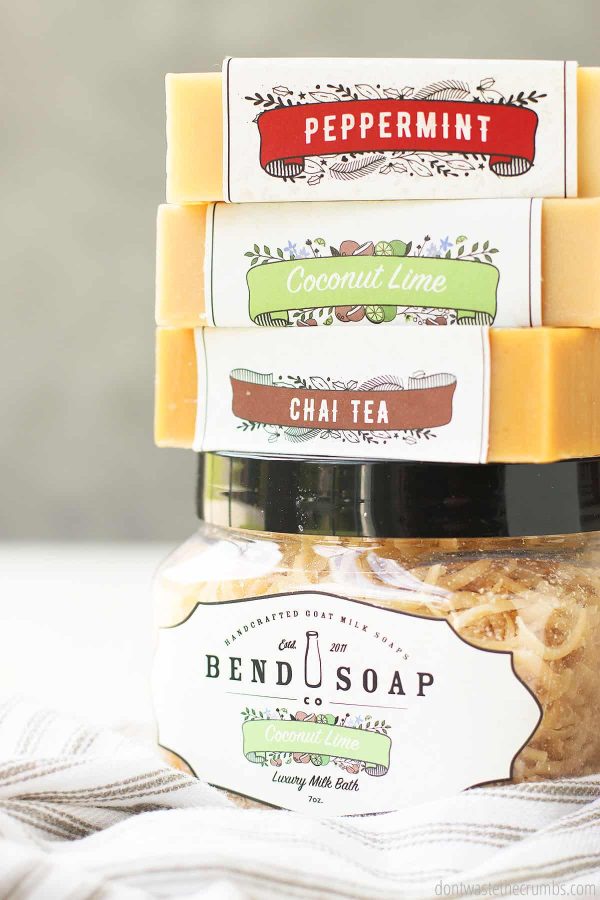
#5 Goat Milk Soap
The goat milk soap no poo method involves using goat milk soap as a shampoo alternative to cleanse your lovely locks. This method has gained popularity among those seeking a more natural and eco-friendly hair care routine.
Best Hair Types for the Goat Milk Soap Method
The goat soap method works well for various hair types, but it tends to be particularly beneficial for those with sensitive scalps or dry, frizzy hair. The nourishing properties of goat milk soap can help moisturize and soothe the scalp while also adding shine and softness to your strands.
How To Use The Goat Milk Soap Method
Step 1: Wet your hair thoroughly with warm water, allowing it to absorb the moisture like a sponge ready for a refreshing cleanse.
Step 2: Cut a bar of soap in half. This makes it easier to hold and stretches the life of the bar. (More tips on stretching a bar of soap.) Then, scrub your scalp to loosen any buildup on your scalp.
Step 3: After you’ve scrubbed your scalp, make sure your hair is wet. Starting at the front hairline and holding the bar in your hand, put the bar directly into the hair and start massaging it around. Continue this around your head until you have sufficiently covered the roots and your hair.
Step 4: Massage into the roots and cover all of your hair thoroughly.
Step 5: Rinse your hair thoroughly with warm water.
Step 6: Follow up with a homemade conditioner.
4 Common Mistakes When Not Using Shampoo
Going No Poo Cold Turkey
When you’re used to daily shampooing your hair each morning, skipping just one day is a huge shocker.
- Consider easing into the routine by washing your hair every 36 hours by washing one night (say Sunday), completely skipping the next day (Monday), and then washing it the next morning (Tuesday). Do this once a week for a few weeks, then twice a week. Eventually, work your way up to washing one morning and going a full 48 hours without washing and continuing to stretch it out from there.
- Another option is to use less shampoo. Most of us could get away with about a quarter-sized amount of shampoo, but try cutting it back to just a dime. This will force you to really work it into your hair. You might miss spots, or your hair might not feel as sparkly clean. But it won’t be as greasy as if you had gone cold turkey, and that’s the whole point.
After a while, see if you can cut it back even less. If neither of these options will work for you, I suggest washing with goat milk soap.
I originally started using it as a way to manage the in-between of shampoo versus no shampoo, but I found that it did such a great job that it became my new hair-washing routine!
Expecting Your No Poo Hair Not To Be Greasy
The ingredients in shampoo are designed to “clean” your hair by stripping it of the oils your scalp naturally excretes.
- It’s a very vicious cycle: Your scalp releases oils, you shampoo to strip the oils and have clean hair, then your scalp, in turn, makes more oils to compensate.
- When you do poo, your hair WILL be greasy. It’s just the natural cycle!
- But I assure you, it will get easier over time, and your hair WILL eventually stop producing so much oil. You can ease the burden by trying one of the techniques mentioned in point #1 above or by following my advice in point #3 below.
Focusing All Your Attention On Your Hair
When you are doing the no-poo method, your focus should be on your scalp, not your hair. A healthy scalp will naturally lead to healthy hair, but it doesn’t work the other way around. Focus on scrubbing and cleaning the scalp to distribute the naturally occurring oils, and your naturally beautiful hair will follow!
Expecting The Typical Shampoo-Like Lather
Friends, it was just silly of me to expect baking soda and water to somehow magically produce a lather in the shower. An unrealistic expectation will only lead to frustration and feeling discouraged! Amidst my disappointment, I found a shining light: Washing with goat milk soap does create a lather!
This made the transition of leaving commercial shampoo so much easier and much more enjoyable. It’s just like the “old” days of shampoo but without chemicals!
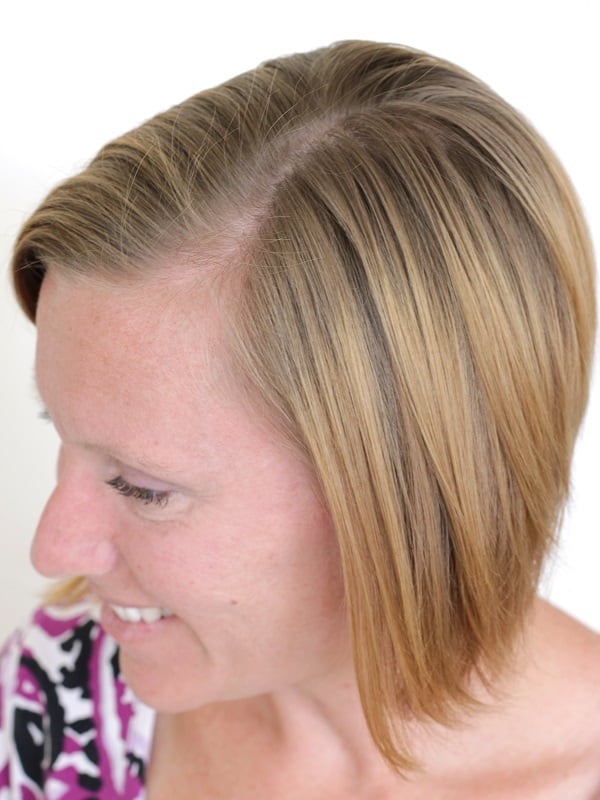
My Current No Poo Routine
I no longer use bar soap to wash my hair. This was a GREAT method when my hair was short, but my hair has always been more oily (definitely not dry) and as my hair got longer, it was harder to wash with a bar of soap. My husband and son still use bars of soap.
I now use a shampoo with natural ingredients and without the bad stuff like sulfates. I buy the quart size Kristin Ess Shampoo from Amazon (here’s a smaller size to try it!) and I’ve “trained” my hair to only need washing once a week.
I started with every other day, wearing my hair up in a ponytail on days I didn’t wash and I use Living Proof Dry Shampoo on the very first night. Then pull my hair into a loose pony on top of my head and blow dry any sweat from exercising in the morning.
Then over time, I was able to stretch it to washing every 3 days… then every 4, then every 5, etc. I always use the Living Proof dry shampoo on Day 1 and every night I plan to wear my hair down the next day. It’s taken me about a year, but my current routine:
Day 1: Wash, wear hair down. Dry shampoo at night.
Day 2-3: Wear hair down. Dry shampoo at night.
Day 4-5: Wear hair down in a braid. Only dry shampoo on day 4.
Day 6-7: Wear hair in a pony or in a messy bun. No dry shampoo either day.
Obviously, this is flex, because on really humid days I may need to wear my hair more up than down, but I still only wash once a week.
With this method, one bottle of shampoo lasts over a year!
FAQs To Clean Hair Without Shampoo
How long does the transition period to ‘no shampoo’ hair care last?
The transition period varies from person to person but typically lasts two weeks or more as your scalp adjusts to the new routine. Be patient, and your hair will find its balance.
What things can I use to help my hair adjust during the transition period?
To help manage the oiliness during the transition, you can experiment with different techniques. Some people find that using a boar bristle brush helps distribute the hair’s natural oils from the scalp to the ends of the hair, giving it a healthy shine. Others might opt for occasional rinses with diluted apple cider vinegar to restore pH balance.
What hair types does the ‘no shampoo’ method work for?
The ‘no shampoo’ method can work for various hair types, including oily hair, dry hair, curly hair, color-treated hair, and straight hair.
How do I deal with excess oil in my hair without using regular shampoo?
Natural alternatives such as apple cider vinegar rinse, bentonite clay, or even just water can help remove excess oil buildup and restore balance to your scalp.
Does the no poo method work for sensitive scalps?
Absolutely! Because you’re not stripping your hair follicles of natural oils, your scalp won’t have to make up for the loss of oil by producing excess oils.
Will washing my hair without shampoo cause hair loss?
No, washing your hair without shampoo does not directly cause hair loss. In fact, using gentle cleansing methods and avoiding harsh chemicals can promote healthier hair growth.
Are there any specific hair care products I should avoid when following the ‘no shampoo’ method?
It’s best to avoid products containing harsh chemicals, sodium laureth sulfate (SLES), or high pH levels, as they can disrupt the natural balance of your hair and scalp.
How often should I wash my hair without shampoo?
The frequency of hair washing without shampoo depends on your hair type, lifestyle, and personal preference. Many people find success with washing every few days, while others prefer more frequent or less frequent washing.
Washing Hair Without Shampoo: The Final Verdict
No matter which shampoo alternative method you choose, your hair will be on its way to becoming the healthiest, strongest it has ever been! Just remember that your hair may experience a transition period of grease and buildup, but don’t let that stop you!
After you overcome the dreaded transition period, you’ll be left with clean hair without chemicals! Have you ever tried any of the ‘no poo’ methods I mentioned? If so, which one was your favorite? If you haven’t yet tried skipping shampoo, which method are you most excited about trying? Let me know in the comments!
More Natural Living Tips
- Homemade Tinted Moisturizer
- DIY Face Serum
- Homemade Healing Lotion
- 7 Benefits of Quality Goat Milk Soap
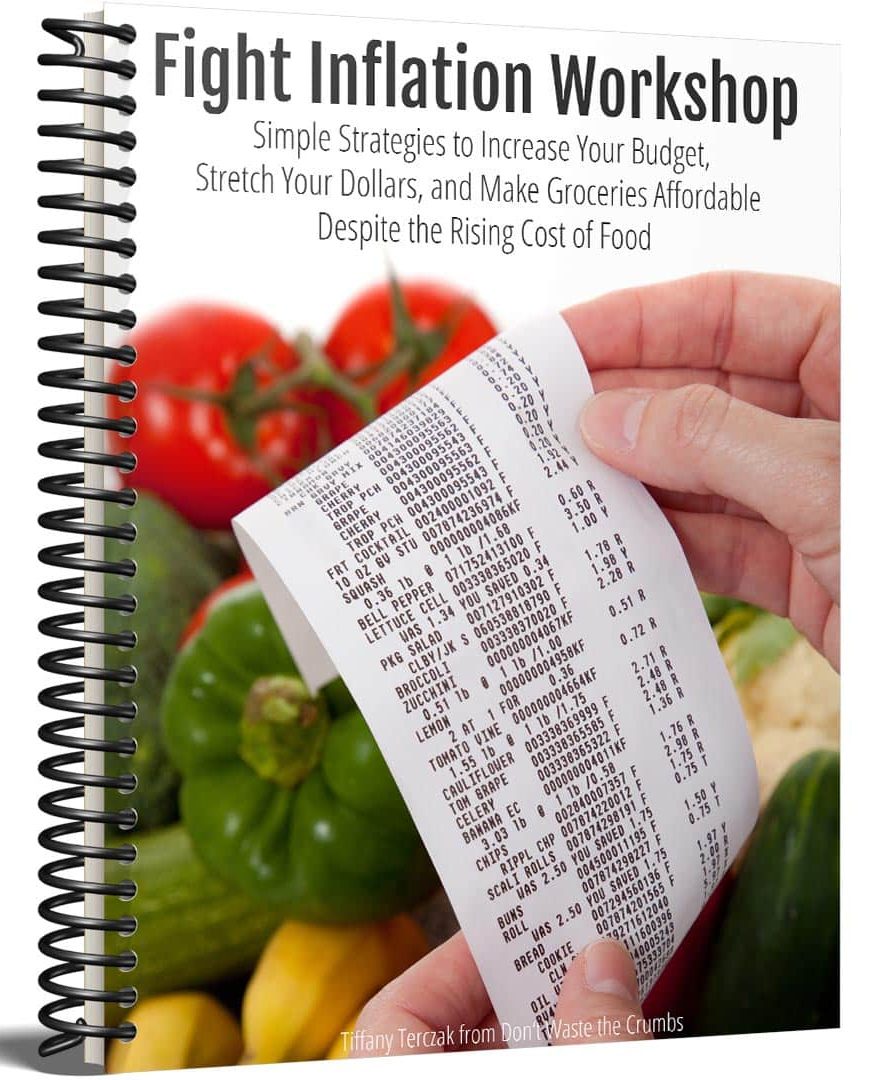


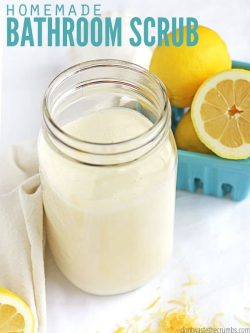
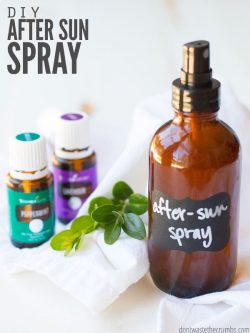
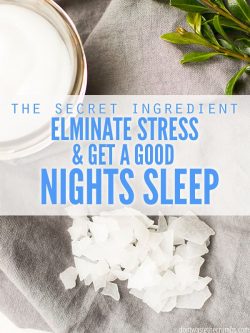
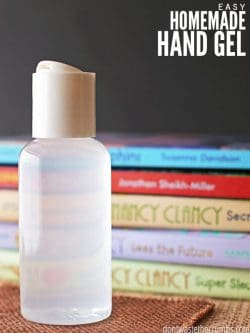

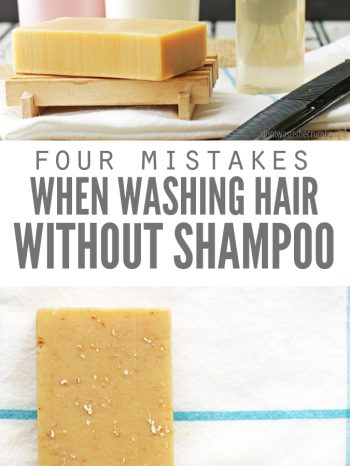
Well I guess the goat milk soap is way better than the chemical bomb in most shampoos but surely the word soap gives it away, it’s still a cleanser? I haven’t seen the product as I’m in the UK but the idea of no poo is no soap too? I’ve not used shampoo since May 7th this year when I had my hair cut short. It’s been pretty good just using water under the shower and I do try and give it a good scrub, now though I’ve suddenly got greasy hair! I have in the past used bicarbonate of soda but it seems to strip my hair and I end up with static which I hate. If there isn’t any soap in the goat’s milk then I’d be keen to give that a try.
Hi – I decided to go cold turkey about 25 years ago. It took about five weeks from the last wash to self-cleaning hair. During the worst four weeks I wore a hat too cover my hair or plaited it in the evening with increasing plaits as it got greasier and greasier to give it a bit of body when I unplaited and brushed it in the morning with my head upside down , so it didn’t stick to my scalp. Then I tired it up in a loose pony tail. Finally it started to come clean again. You have to rinse your hair thoroughly every day as described above to encourage blood circulation and wash out the excess oil and any dirt.
For the first year or so it tended to go flat if I was a bit under the weather or tired but now it’s actually quite dry so I use conditioner and it’s never flat. On occasion (once a year at most!) I treat myself to a decent haircut (I usually cut my own) and in a good hairdresser’s I’ll allow them to wash it, too. My hair does benefit from the deep clean and blow dry and looks amazing for the couple of days the best of a haircut usually lasts.
Do you have hard water where you live and the soap bar still works? I’ve been using bend soap company and another companies goat milk soap for my body and I’ve tried the latter on my hair- it just makes it so waxy and nasty feeling, while bend soap I think leaves it clean if I really scrub? I do have a water softener but am not completely sure if it works the right way, just wanted to know how hard your water is if you have it and if you have any problems with it at all. Is it just the two week period of waiting and your hair adjusts to the bar even in hard water?
Our water in California was AWFUL, and yes it was hard. I’ve traveled with this soap all over the country, in various waters, and it’s always worked. The key is to scrub hard, and to be honest, Bend Soap Company’s soap is far better than a typical goat milk soap on a shelf. It’s not so much about the water – it’s about scrubbing hard and well until your hair adjusts, and using a good soap!
I was just reading some posts that had to do with goats milk. I just started using BEEKMAN goats milk shampoo bars but may just try one of their basic goats milk bar soaps. My question is about the conditioner. These shampoo bars do have some natural moisturizer but can you use just any store bought conditioner while using goats milk or does that totally mess up the whole no-poo method?
It kind of messes with the whole no-poo method Charlotte, since shampoo strips your hair only for conditioner to build on top again. I’d recommend this homemade conditioner if you ditching traditional shampoos: https://dontwastethecrumbs.com/2015/02/diy-homemade-conditioner/
After reading your post and then reading the horrifying ingredients of my two go-to shampoos, I ordered a bar of oatmeal and honey soap from Bend. In the winter my husband has very dry skin and eczema patches, so figured to kill two birds with one stone (or actually, one bar of soap :). Washed my hair with the soap the first time today, and was sooo happy not to have the mile high suds of a regular shampoo to deal with! Like others who have posted, we have hard water which makes it take longer to rinse out anything, but my hair was left feeling cleaner and softer than from the regular shampoos! Thank you so much for this post and for your blog in general! I have learned so much and look forward to trying more!
You’re so very welcome Valerie!
Hello,
Which bendsoap are you using for shampoo. ?
(Tea tree, honey …)
For the transition period can we use this soap every day ?
Would you recommend to finish with a cold rinse ?
Thanks.
Kevin
Hi Kevin! I personally like the eucalyptus scented soap, but you can use whatever you like. And yes, you can use this everyday! I don’t typically do a cold rinse myself, but you can if you want!
And here I was thinking that modern products were just bringing our hair to new levels that it would never have even gotten to naturally.
I’m interested to try goat’s milk soap instead of shampoo. Maybe I just didn’t see it, but does anybody have experience using it with dyed hair. I’m just not ready to be gray yet and wondered if it made any difference. :). Thanks!
I used to dye my hair Sherri, and didn’t have any problems. 🙂
Hi! I’d like to give this a try. I am wondering do you use any products for volume when you blow dry your hair? like what about volumizers or hair sprays? What would you recommend? Thanks!
Hi Jen! I don’t use any products in my hair at all. My hair has always been fine, so products never worked anyway. Sorry I couldn’t help anymore!
I have been using Bend’s soap for 5 or 6 weeks now and have enjoyed it. However, the last couple of weeks my scalp has been dry and itchy. I made my husband inspect my scalp today and says he see little dry flakes down at the scalp area. I don’t think it is dandruff but just dry scalp. What would you suggest? More of your homeade conditioner? I have been using it about once a week. Washing every 2 to 3 days. I am using g the honey oatmeal bend soap. Thanks you!
So glad you’re liking the soap Kerri! If you’re experiencing itchy in just the last couple weeks – as opposed to the entire time – my gut says it’s environmental. Could it be the season? Or allergies? Is your skin itchy anywhere else? Maybe try a different scent of soap? You could do also do a hair mask… maybe that would help?
Hi! I’m a little late to this, but I went and ordered myself some Bends for my eczema hoping it would help me as it has others. I fell across your blog and decided to test it out on my hair too. I tried going down the no poo path about a year ago (and by no poo I mean water washing which I was really hoping would work). Unfortunately I didn’t have it in me to get through the greasy stage and reverted back to shampoo. This, unfortunately, left my hair dry and brittle for some reason. Now seeing your experience, I decided to try out bends. I wouldn’t say it’s greasy, but it left my hair feeling quite waxy. Is it supposed to feel this way? Or will it go away over time. Also, do you use it on the rest of the hair or just the scalp?
Hi Mia! You could say my hair felt waxy… it was definitely different than “normal.” It was like it was clean, but not clean, and it’s hard to explain in words. If only you could touch my hair! Honestly, commit to using Bend’s soap for 2 weeks as you wash and if you don’t like the direction, you can always revert back. If you struggle with fly aways, dry hair or anything that seems out of the ordinary, use the natural conditioner method mentioned in the post. It really helps!
As for washing, I use it all over my head. I hold the bar in my hand, rub it on my head along my hairline first, then around my head in a circle, slowly working my way towards the center, like a concentric circle. Then I set the bar down and use my fingers to wash. When you first switch, it’s a lot of scrubbing all over. As your hair adjusts, you can almost get away with not scrubbing at all. Once my head is scrubbed and soapy, I put the length of my hair on my head and “wash” as if I was using shampoo. There are plenty of bubbles! Rinse, then condition if necessary. 🙂
Hang in there Mia – it’s strange at first, but that 1-2 weeks was one of the best decisions we’ve made for natural hair care. It’s so freeing to just use a bar of soap!!
Hello! Sorry for my English but I don’t really get what do you scrub your hair with? A brush? a special mix? I hope I’ll be able to find goat milk soap in my country and thanks for your tips)
No worries at – you scrub with your fingers!
Oops I just realized the answer to my question was a few comments up 🙂 sorry
When using the goat milk soap how often do you wash your hair?
I just wanted to say that I stumbled upon this and blog and I decided to try the goat milk soap! I live in Oregon and was excited to see the Bend Soap Company was the soap you used on your hair! I have used it once or twice a week for about a month now and I love it! My hair responded so well and I can not see myself ever going back to shampoo! I was curious which kind of soap is your favorite to use. Thanks again!
So glad you like their soap too Richelle! My favorite I think is a tie between lemongrass and the citrus mint. 🙂
Tiffany, if I may ask, how often do you wash your hair now? Or, more importantly, how long can you go until your hair starts to feel like the over compensating build up of oil is noticeable? Do you still deal with that? My desire is to get to the point where my hair is out of that routine and doesn’t get overly greasy. Ever. Maybe just a dream but oh well. My natural hair care journey is a long and detailed story, wrought with mistakes and learned lessons, as well as education about how things REALLY work (such as oil being your friend, not your enemy – both on skin and hair). Suffice it to say I get really excited when I come a cross posts like this. ?
Hi Heather! I wash my hair every day because it’s short and for preference, but I’ve learned that you can “train” your hair to be washed as often as you desire. So if I only wanted to wash every 2 days, I’d do that for a week or two and my scalp would start to compensate appropriately. I have noticed that some scents of soap dry my hair more than others (making it great for not washing as often), plus the weather and geography plays a part too (hello CA to GA in WINTER!).
I don’t think it will never ever get overly greasy. I mean, your scalp will continue to produce oils and at some point, it will build up. But I do think you could get it to 3-4 days. You might have to use a dry shampoo on day 3 or 4, and wear a bun/ponytail, but it could be done!
I don’t know what I’m doing wrong here, but I’ve been doing the goat’s milk shampoo for almost a week now and my hair is really heavy and greasy. Is it just like this for now and will it start to get better? My hair gets so greasy because it’s thin, I was showering once or twice a day with volume shampoos and it just made my hair so lifeless. I got the goat’s milk soap you recommended and I believe I followed your instructions correctly… but it feels like I just cannot get the grease out of my roots, and so my hair is stiff and heavy that it’s breaking because I can hardly even put a comb through it, it’s so thick! I’ve tried to scrub the oils out and let the water hit my scalp before and after using the goat’s milk soap, but it seems like it’s impossible. Do you know what I can do to make it lighter and move-able again?
Hi Maike! What you’re going though is very normal. Just keep going, and be sure to SCRUB your scalp good and long. I’d recommend scrubbing it before you wash, again while washing and then just be sure to rinse the soap out thoroughly. I’d also follow-up with a conditioning rinse that will help seal the cuticle and make your hair more manageable: https://dontwastethecrumbs.com/2015/02/diy-homemade-conditioner/
Don’t give up! You’ll get over this hump soon, I promise!